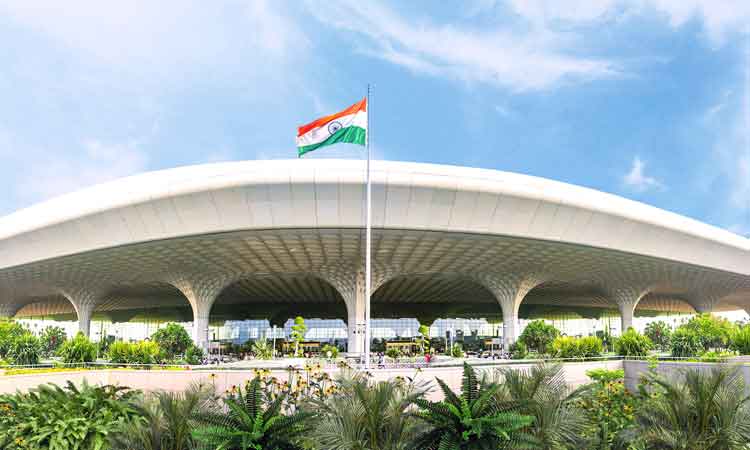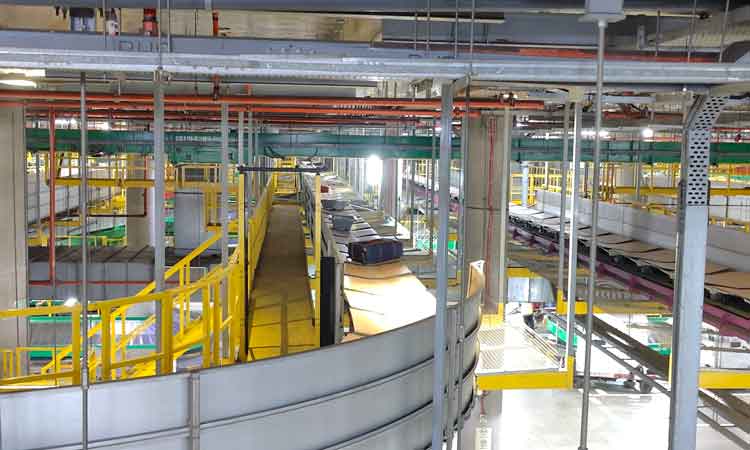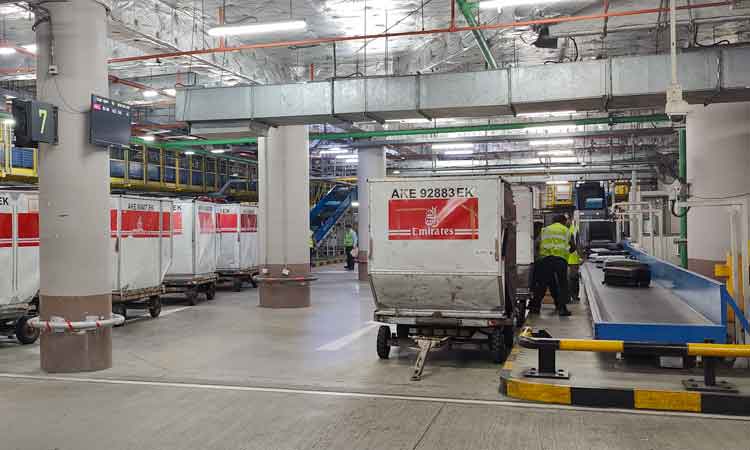Day in the life of a checked bag at Mumbai International Airport
- Like
- Digg
- Del
- Tumblr
- VKontakte
- Buffer
- Love This
- Odnoklassniki
- Meneame
- Blogger
- Amazon
- Yahoo Mail
- Gmail
- AOL
- Newsvine
- HackerNews
- Evernote
- MySpace
- Mail.ru
- Viadeo
- Line
- Comments
- Yummly
- SMS
- Viber
- Telegram
- Subscribe
- Skype
- Facebook Messenger
- Kakao
- LiveJournal
- Yammer
- Edgar
- Fintel
- Mix
- Instapaper
- Copy Link
Posted: 7 May 2023 | Mumbai International Airprot | No comments yet
Ever wondered what happens to your luggage after saying goodbye to it at check-in? Mumbai International Airport revealed all for International Airport Review Issue 1 2023.


Passengers leaving for their travels bid goodbye to their luggage at the bag drop counter after checking-in for their flights. The luggage then begins its own ‘hidden journey’ and is only reunited with its owner at the baggage claim belt at the destination airport. To passengers, this complex operation takes care of itself miraculously. They trust that their luggage will reappear safely at their destination airport, unless of course, it doesn’t appear.
Missing luggage is one of the banes of air travel. While the latest statistics collated in the baggage report by aviation technology company SITA shows that airlines are now 70% less likely to lose a bag compared to 10 years ago, the number of mishandled bags globally still stands at 22.7 million pieces in 2017. With the industry handling a total of 4.6 billion bags in 2017, this is nearly six bags mishandled for every 1,000 passengers. Although this may seem like a relatively small number, the owners of these bags will feel it is one luggage too many.
Mumbai International Airport constantly strives to keep the smile on the faces of its passengers. One important way to do this is to keep the number of mishandled luggage to an absolute minimum.
Zip. Zap. Zoom
Every single baggage transiting through Mumbai Airport – one of the busiest airports in the world – undertakes a unique chain of operations, travelling through a system with advanced technology of auto-sortation which is highly efficient in speed and accuracy. No matter where the baggage is bound or the nature of the onward journey, the complete length of the journey that the baggage undertakes at Mumbai Airport is around 8km owing to the complete length of the system.
Meanwhile, other interesting facts include functions such as the baggage handling system at Mumbai Airport, which is designed with the handling capacity of 9,600 bags/hour, whereas pre-COVID – the system handled nearly 5,000 bags/hour.
The time taken to clear the outbound baggage from check-in to the makeup area is about 15 minutes and the time taken to clear the inbound baggage i.e. arrival international and domestic baggage, is 90 seconds and 55 seconds respectively.
Interestingly, the highest number of bags handled in a day at the airport was more than 1,000 and in a month were over 2.7 million.
Mumbai Airport’s Heartware
With two operational baggage handling systems, Mumbai Airport’s dedicated Baggage Operations team has 24 dedicated team members involved in the baggage handling process. It is a beautiful balance of efficient systems and passionate teams at every step of the way.
- One is at Terminal-1 B which is simple and one-to-one.
- The Terminal 2 system is complex, and is designed to handle 9,600 bags/hour, with the latest auto sortation technology. This has resulted in improved quality of safe and secured services offered with more accuracy.


Teamwork makes the dreamwork
Apart from Mumbai Airport baggage operations, security and engineering team, external stakeholders like vendors providing technical and operational services, CISF and customs, airlines and GHAs are involved in the baggage handling process. The operations team deals closely and collaboratively with the internal and external stakeholders to achieve a quality of baggage services which enhances passenger experience.
- The baggage handling team also monitors the health and safety of the baggage hall environment with the internal stakeholders, for the users. The operations team maintains a close coordination with the external stakeholders to train, brief and continuously monitoring the baggage, also ensuring a record of zero-pilferage at Mumbai Airport – one of the highest degrees of efficiency in use across airports around the world.
- Apart from this, a dedicated Baggage Control Room team keeps 24/7 tap of the operations of the system which stretches to the 8km journey. The system includes 210 input points i.e. check-in counters in 18 terminating points and 26 arrival inputs including special equipment.
The technical team deals with response time to maintain the delivery timelines and the challenge of short maintenance slots due to 24/7 operations. The team is also responsible for delivering high equipment serviceability and is proactive and predictive rather than reactive.
In safe hands
Leftover/unclaimed inbound bags remain in Airline (Domestic)/Customs (International) custody. On departure any bag received without identification is kept in Mumbai’s baggage operations custody for around 30 days from the date of receipt and then it is handed over to Customs.
Passengers need to coordinate with the Airlines they travelled from regarding their lost luggage.


State-of-the-art technology
As for technological enhancement, self-bag drop facility has been integrated into the existing baggage handling system at Mumbai Airport. The current system is also compatible to accommodate upgradations in the future.
Apart from conveying bags, the baggage handling system has two main core functionalities, namely:
- Automatic sortation: Automatic sortation of bags is achieved through a complex yet reliable high-level and low-level control system. The system can deliver bags to their destined location with precise accuracy and also assists handlers with real time location of the bag in transit from check-in to destination i.e to their assigned carousels
- Inline security screening of bags: Inline security screening of bags also takes place in the system while the bags are in transit and is designed in a way to achieve 100% screening without adding additional travel time of the bags from check-in to their destined carousels.
To maintain a high percentage of equipment serviceability and achieve overall airport performance, as well passenger satisfaction, timely and regular on-the-job training for standard, as well as contingency operations, are undertaken.
In view of the criticality of the baggage handling function in airport business, robust strategy and processes are vital for uninterrupted services. We have developed world class processes over time in alignment with our stakeholders and available infrastructure to make it more effective and practical. Continuous improvisations and adoptions with the human touch as per new regulations, technology upgradation and global trends is key for achieving excellence.
There are many incidents where the team went the extra mile to trace bags not only at Mumbai Airport, but across the world to connecting airports which were near impossible to reach, and reunited those bags with the passengers. Our motive is to keep bags moving, irrespective of circumstances, to achieve quantity and quality of uninterrupted services, maintaining passenger as well as stakeholders’ satisfaction.
With the combined efforts of airlines and airports, passengers can take comfort in knowing that the industry is taking serious action to reduce the chance of bags going missing. At the end of the day, better baggage handling capabilities is not just solely about keeping passengers happy. With the industry projecting that global passenger numbers are set to double from the current four billion to about 7.6 billion by 2036, lost luggage presents a cost which cannot be neglected.
Issue
Related topics
Baggage handling, Passenger experience and seamless travel, Self-service, Terminal operations


















